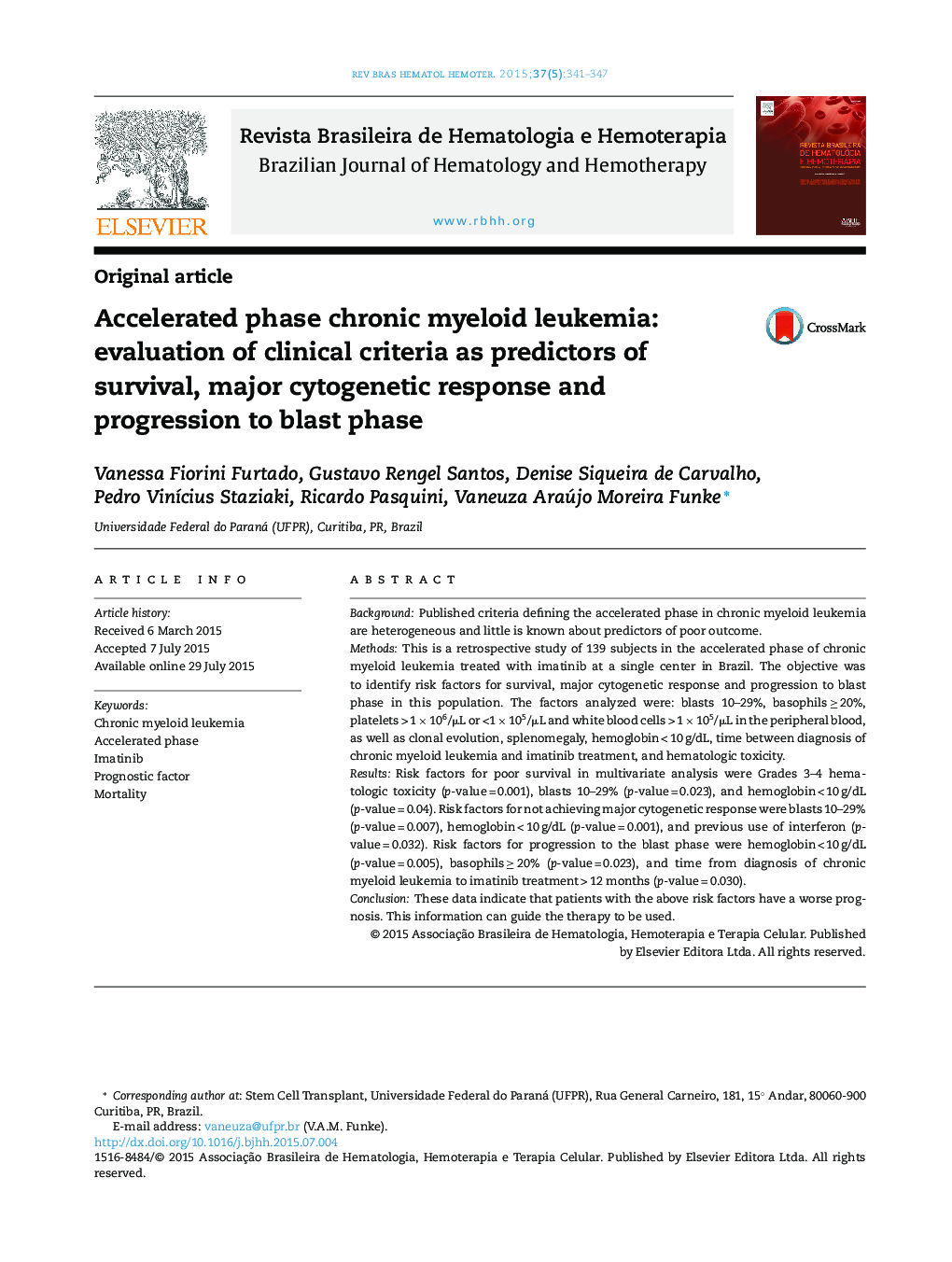| Article ID | Journal | Published Year | Pages | File Type |
|---|---|---|---|---|
| 3332987 | Revista Brasileira de Hematologia e Hemoterapia | 2015 | 7 Pages |
BackgroundPublished criteria defining the accelerated phase in chronic myeloid leukemia are heterogeneous and little is known about predictors of poor outcome.MethodsThis is a retrospective study of 139 subjects in the accelerated phase of chronic myeloid leukemia treated with imatinib at a single center in Brazil. The objective was to identify risk factors for survival, major cytogenetic response and progression to blast phase in this population. The factors analyzed were: blasts 10–29%, basophils ≥ 20%, platelets > 1 × 106/μL or <1 × 105/μL and white blood cells > 1 × 105/μL in the peripheral blood, as well as clonal evolution, splenomegaly, hemoglobin < 10 g/dL, time between diagnosis of chronic myeloid leukemia and imatinib treatment, and hematologic toxicity.ResultsRisk factors for poor survival in multivariate analysis were Grades 3–4 hematologic toxicity (p-value = 0.001), blasts 10–29% (p-value = 0.023), and hemoglobin < 10 g/dL (p-value = 0.04). Risk factors for not achieving major cytogenetic response were blasts 10–29% (p-value = 0.007), hemoglobin < 10 g/dL (p-value = 0.001), and previous use of interferon (p-value = 0.032). Risk factors for progression to the blast phase were hemoglobin < 10 g/dL (p-value = 0.005), basophils ≥ 20% (p-value = 0.023), and time from diagnosis of chronic myeloid leukemia to imatinib treatment > 12 months (p-value = 0.030).ConclusionThese data indicate that patients with the above risk factors have a worse prognosis. This information can guide the therapy to be used.
